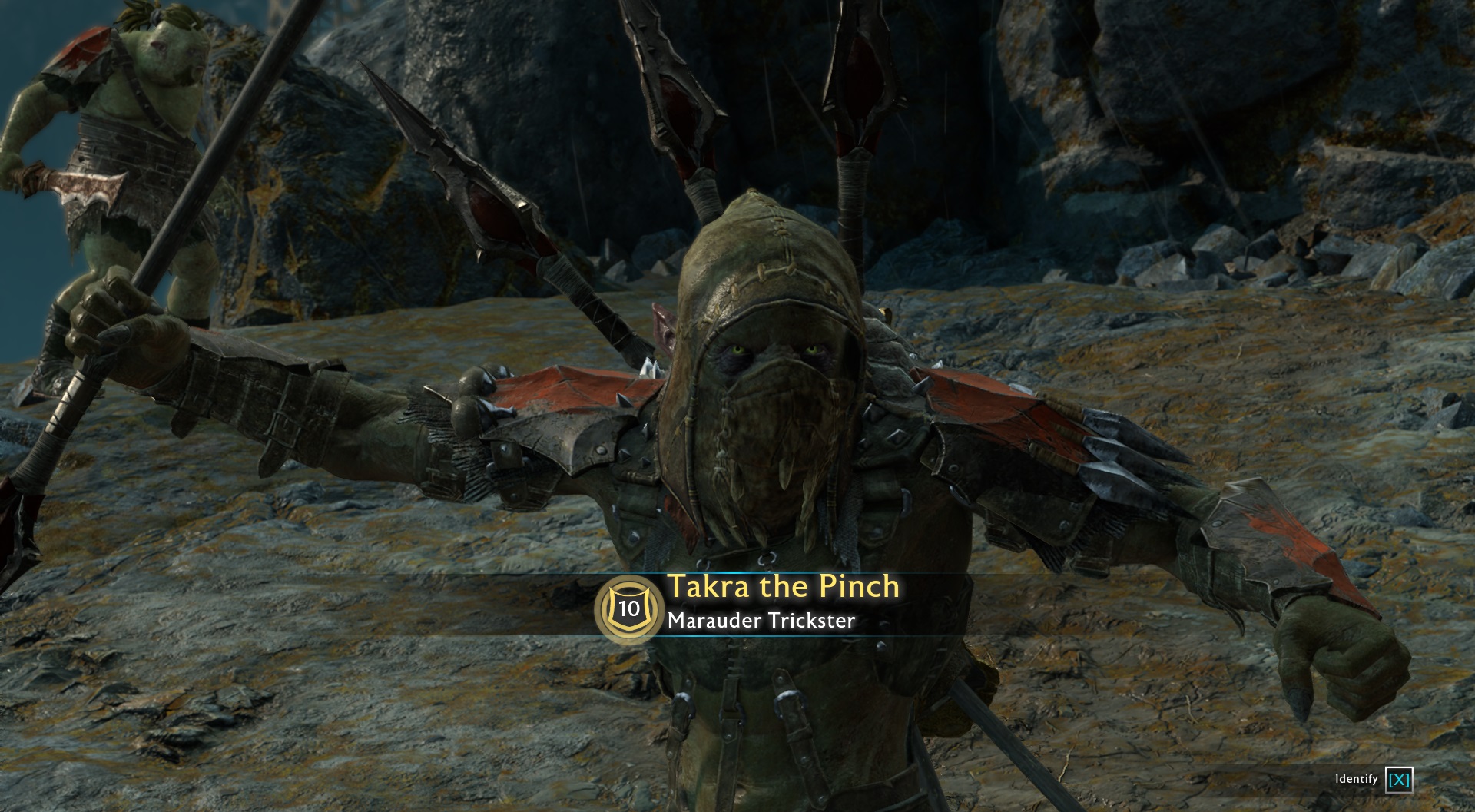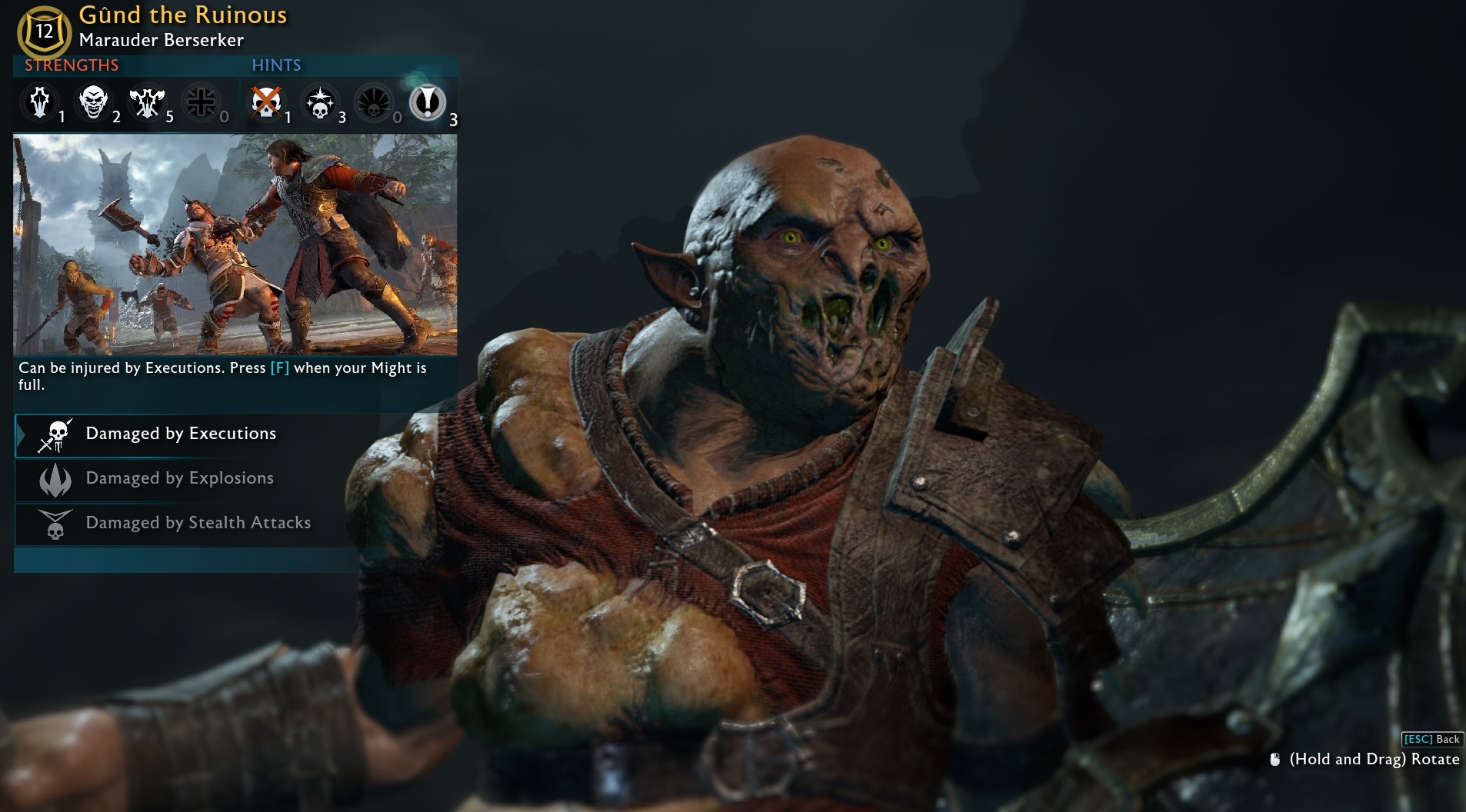About The Nemesis System In 'Middle-earth: Shadow of War'
The backbone of Monolith’s Middle-earth games is the Nemesis System, which provides prominent enemies (that you can kill or recruit to your army) with different traits and skills. Each of these foes also have their own set of strengths, weaknesses, affiliations, and weapons that make them stand out from their comrades. Now that Middle-earth: Shadow of War is out, we spoke to some of the developers about the work that goes into creating this system. Specifically, we talked to studio head Kevin Stephens, engineering director Matt Rice, lead engineer Matt Allen, and technical director Piotr Mintus.
Different Orcs For Different Folks
According to Rice, there are two types of Nemeses in the game. There are foes who have a random set of traits and appearances, but there are others created based on a set of rules formed by the developers. This allowed the studio to build a foundation of storylines for some of the Orcs, Uruks, and Ologs you’ll encounter in your journey.
“We have created this system of 30 or so roles, like this guy is the Butcher, or this guy is crazy, or any number of different types of developments,” Rice said. “That kind of feeds into what kind of different attributes and traits that person gets. A crazy guy will be more inclined to pick one of the voice actors that we've recorded that has a lot of crazy lines in it, and he'll choose a lot of animations that are a bit more sporadic and twitchy. So there is a rule set that is created by the design team in our database that says what element should go with what character. We build them up one by one; so first we'll go ahead and pick what his role is, and then from there we'll go ahead and pick out some attributes. Depending on what attributes are chosen, we may add more attributes down the line.”
When the Nemesis System spits out a few Captains or Warchiefs with varying strengths and weaknesses, you can forge a relationship with some of these enemies. Most of them will die in combat, and you’ll never see them again. However, there are some who can come back from the dead, and they’ll remember the physical scars inflicted in previous encounters.
“There are certain templates or compositions that get created kind of initially when characters are created, but then as the player interacts with them, they will get new data points that need to be built off of,” Rice said. “So for instance, the most obvious example is, we've composed this guy to be a whole character and he's got all of his limbs, but the player comes around and cuts his arm off. Well, that tells the system to go through and look at all of the different possible reactions that could happen to that: whether or not he gets a stump, whether or not he gets a prosthetic arm, or whether or not he'll speak to it the next time.”
“At the highest level, the system is designed to look for the best player story,” Stephens added. “If we have the role of the specific orc or just the exact right kind of things happen, you'll get an orc that is basically like a villain in a traditional game. You could get your villain that is super memorable and super unique that very few other people will see, but everything has to fall into place for that to happen.”
The Nemesis System also looks at multiple data points from past fights. From those factors, it will give the Orc a specific voice line to call out based on previous events. Rice said that incidents such as a lost limb or a fight with a deadly caragor might be more important to a Captain over other events such as running away from combat or a rivalry with another Orc.
Get Tom's Hardware's best news and in-depth reviews, straight to your inbox.
“The system picks up a line, and the presentation system plays it off. Basically, you can think of the data structure that represents an orc, and we keep on adding new events to that orc and then the system comes by later on and scores what is the best thing to do,” he said. “This doesn't have to be just related to the presentations. It could be decided upon whether or not the AI is going to kill the player when the player is down for the count or whether or not he's going to humiliate him or walk away. It's scoring it based on some numbers that the designers have put in.”
System Requirements
In terms of a player’s computer hardware, Mintus said that your system is put to the test during combat scenarios. Multiple animations, audio lines, and the way you take down a boss are all taken into account through the game engine. Allen also mentioned that other elements such as lighting, the camera, and AI behavior will test the strength of your PC build. Monolith will continue to tweak each of these factors as needed, but Allen is satisfied with the game’s contents at launch.
“There's always something more to be tuned, something to come back to, and an unlimited experience of stories that can be created, and over the course of the project it's always very satisfying and very surprising to watch it evolve,” he said.
The amount data points created in every fight, combined with an enemy’s different traits, means that you won’t see the same Orc, Uruk, or Olog from your session in another player’s game. Rice said that there are 900 quintillion (that’s 18 zeroes) enemy combinations, which are based on traits, visual appearances, and audio lines. This evolution of the Nemesis System required a significant portion of Monolith’s team to develop the feature.
“Basically, we had an entire team dedicated to it. When I say the entire team, I mean most of Monolith dedicated to working on this system for a long time, so the stress comes mainly from the composition aspect of it,” Rice said. “How are we going to decide how all these things go well together? How are we going to test to make sure that any random composition of characters that we've made actually function correctly and are both fun to play against and not impossible to defeat? How do we make sure they don't have an incredible number of attributes that are basically undefeatable by the player? There's a lot of forethought that needs to go into a lot of the design, is what I'm getting at.”
A Unique Army
Throughout the game, foes of different combat traits and attitudes can rise up the enemy ranks, and you’ll need to use your many skills to take them down or add them to your roster. Allen described the Nemesis System best when he called it a “management of chaos.”
“I think that probably isn't the first time it's been said, but having all of these systems and all the possibilities that could be happening concurrently ... and making sure that is all performance 100% of the time is awesome and a challenge.”
With all of Mordor up for grabs, you’ll encounter thousands of enemies, but only a select few will leave an impression on you. It’s these handful of foes that makes your gameplay session unique, and it’s all thanks to the improved Nemesis System.
| Name | Middle-earth: Shadow of War |
|---|---|
| Type | Open-world, RPG, Action/Adventure |
| Developer | Monolith Productions |
| Publisher | Warner Bros. Interactive Entertainment |
| Platforms | PCXbox OneProject ScorpioPlayStation 4PlayStation 4 Pro |
| Where To Buy | SteamPlayStation StoreXbox StoreAmazonBest BuyTargetGameStop |
| Release Date | October 10, 2017 |
Rexly Peñaflorida is a freelance writer for Tom's Hardware covering topics such as computer hardware, video games, and general technology news.
-
Zaporro If by "best possible story" they mean a 30 seconds of unskippable bull orc talk then yes, they nailed it.Reply
How difficult is it to let player skip this idiotic dialogue they heard 1000 times already, especially when 3 commanders come up at once and each of them has to tell his story.......... -
j.s.c.jason.campbell I just got the first one a few months back. One orc spawned with the ambusher trait, and proceeded to kill the crap out of me repeatedly. Eventually he was impervious to everything except explosions, so I started over. Frustrating, but memorable.Reply

